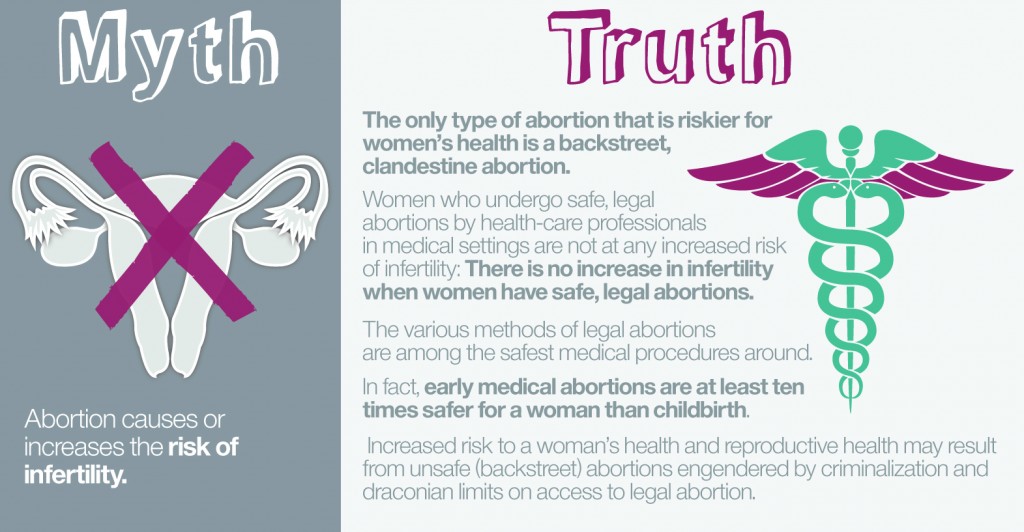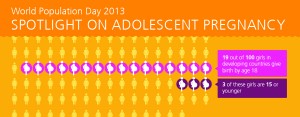A Barrier An Hour: Discussions On Safe Abortion For Women’s Day 2014
It’s 8th March – International Women’s Day, and we have something special up our sleeves. To mark the date, we will post about one barrier to safe abortion every hour on Facebook and Twitter from 8 am to 8 pm. That’s 13 barriers in 12 hours and so to make reading easier we are also sharing the list here:
Barrier 1: Law
 Did you know that 25% of the world’s women live under criminal laws?
Did you know that 25% of the world’s women live under criminal laws?
Asia’s laws vary from extremely restrictive like in the Philippines and Sri Lanka to fairly liberal like in India and China. Read more to learn about this laws!
Barrier 2: Stigma
Abortion stigma fuels restrictive interpretations of the law and justifies shaming of women who seek abortions. Unfortunately, healthcare professionals can imbibe these values from their community and indulge in unethical practices. To learn more follow this new blog: http://hashtagtmb.wordpress.com
Barrier 3: Paternalism and Patriarchy
Patriarchy spawns paternalism and this often disempowers women. Several abortion laws appoint doctors as gatekeepers for safe abortion, and very often paternalism hinders with the best that they can provide. Here is an interview with Amar Jesani on the origin of paternalism and how it affects patient autonomy:
Barrier 4: Myths
Inaccurate information about safe abortion can become massive barriers. Doctors for Choice and the Abortion Rights Campaign bust 8 myths as part of a campaign to repeal the 8th Amendment in the Constitution of the Republic of Ireland, which is currently restricting abortion services across the country. Read the series.
Barrier 5: Sexism
 Sexism often fuels ideas about women’s ability to make decisions for themselves, tampering with autonomy and their ability to control their bodies and sexualities. While some of these barriers might only exist in the community, others become legislated and turn into policies. Here is a blog from our archives of how this sexism is detrimental to women: http://wp.me/p3O7nG-gU
Sexism often fuels ideas about women’s ability to make decisions for themselves, tampering with autonomy and their ability to control their bodies and sexualities. While some of these barriers might only exist in the community, others become legislated and turn into policies. Here is a blog from our archives of how this sexism is detrimental to women: http://wp.me/p3O7nG-gU
Barrier 6: Cost
Even safe and legal abortions are not always affordable because of the market forces that determine healthcare. Here are voices from Nepal and Indonesia on how cost becomes a barrier to access particularly for those marginalized by poverty: https://asap-asia.org/blog/safe-and-legal-but-expensive/
Barrier 7: Religion
Religious fundamentalism poses enormous barriers for abortion worldwide, but these ethics do not speak for all. Here is an interview with Rashidah Abdullah, co-chair of RRAAM and a member of Sisters of Islam on why liberal interpretation matters.
Barrier 8: Conscientious Objection
Sometimes, it’s easier to look at a problem through the eyes of fiction. As conscientious objection, which evolved during World War II, comes to be extended to safe abortion services, here is a thought from John Irving’s Cider House Rules:
“Here is the trap you are in…. And it’s not my trap—I haven’t trapped you. Because abortions are illegal, women who need and want them have no choice in the matter, and you—because you know how to perform them—have no choice, either. What has been violated here is your freedom of choice, and every woman’s freedom of choice, too. If abortion was legal, a woman would have a choice—and so would you. You could feel free not to do it because someone else would. But the way it is, you’re trapped. Women are trapped. Women are victims, and so are you.”
Barrier 9: Misogyny
Misogyny and the “good woman” stereotype has marginalized several women and lead to their shaming. Here is a powerful article from Thailand on how this works as a barrier to health care and safe abortion: https://asap-asia.org/blog/its-not-morality-talking-its-your-misogyny/
Barrier 10: Marginalization
Speaking of the marginalization that misogyny causes, here is a look at how the reproductive rights of sex workers are compromised. Their right to prevent unwanted pregnancy, right to safe abortion and right to motherhood is masked by the stigma and misogyny directed at the profession.
Barrier 11: Age
Adolescent pregnancy is not uncommon in Asia. While the rates of child marriage are high, the reproductive healthcare needs of these young girls are overlooked. As are the healthcare needs of young unmarried girls, who in addition have to face a lot of stigma. Even in countries with liberal laws, abortion access is restricted among young people by the lack of information and comprehensive sex education. Our Youth Champion, Yu Yang, writes from China: https://asap-asia.org/blog/young-china-needs-more-information-about-pregnancy-and-abortion/
Barrier 12: Sex Selection
Among the emerging barriers to safe abortion is sex selection. But it is also an ironic barrier. Sex determination, the process of confirming the sex of the fetus before or after conception, is fueled by deep seated misogyny and discrimination against women. Unfortunately, restricting access to safe abortion is emerging as the quick fix to this issue, and this itself simply engenders another barrier to women’s rights and autonomy. Here is an article explaining how.
Barrier 13: Conservative Politics
61% of the world’s women currently live in countries with fairly or extremely liberal abortion laws, and their access is restricted by one or more of the other 11 barriers discussed above. But recently, conservative politics has begun to threaten the abortion law itself. In this blog Ayse Akin, a leading practitioner and women’s rights activist in Turkey, speaks the restrictions in her country.
If you would like to join us and help address these barriers sign up for the International Campaign For Women’s Right To Safe Abortion by taking a 2-minute survey.








